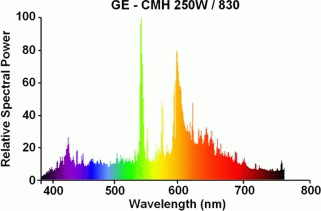When a strontium compound is heated in a flame, red light is produced. When a barium compound is heated in a flame, yellow-green light is produced. Why does this happen?
1 Answer
See below.
Explanation:
The color of the flame is due to the light emitted by certain salts. The atoms of element contained in the salt are excited to higher energy levels due to heat of the flame. Thereafter, the excited atoms return to the ground state emitting electromagnetic radiation of characteristic frequency. This radiation is seen by the viewer as emitted color.
The energy
where
For example, Sodium
Copper
Barium
Strontium salts and lithium salts produce:
Lithium carbonate,
Strontium carbonate,

Picture above shows emission spectrum of a metal halide lamp
